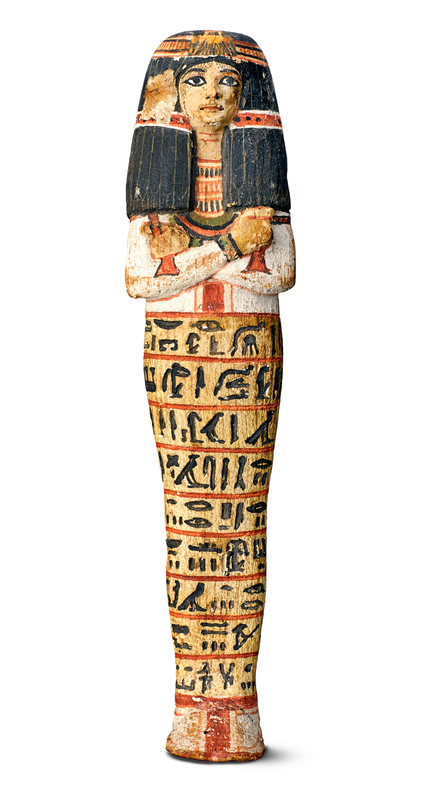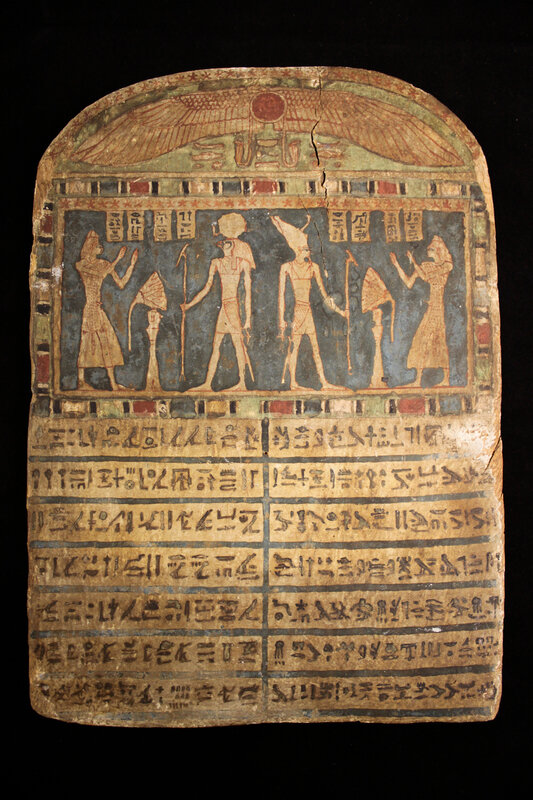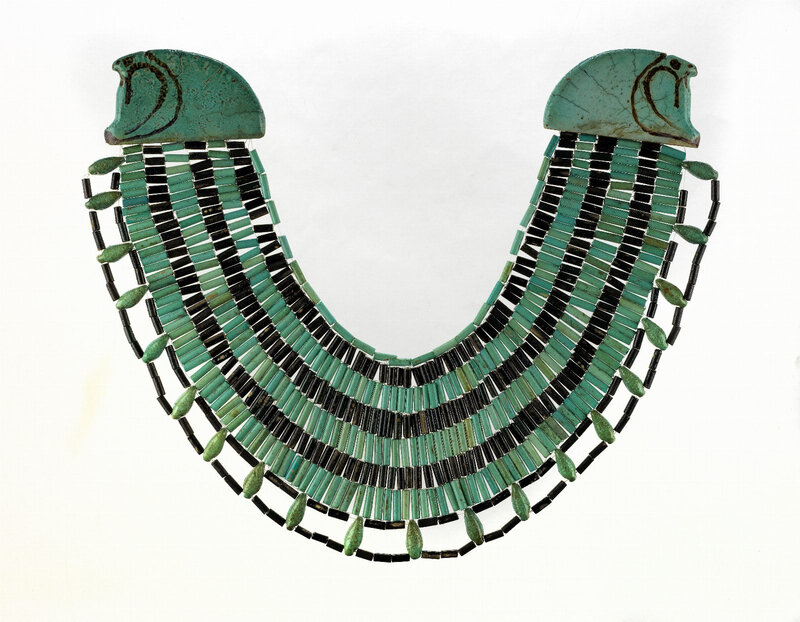Behind-the-scenes with the Penn Museum's renowned Egyptian collection
Shabti of the Lady Maya. Painted wooden shabti (a funerary figurine) comes from the site of Deir El-Medina and dates to the 19th dynasty, circa 1292-1190 BCE. Photo: Dorling Kindersley/Penn Museum.
PHILADELPHIA, PA.- Ancient Egypt: From Discovery to Display provides visitors a once-in-a-lifetime opportunity to walk in the shoes of an archaeologist. Explore the journey artifacts take on their way to museum display, from excavation to conservation to storage and research. More than 200 fascinating objects, many of which have never been on view before, are included throughout the three-part, 6,000-square-foot exhibition. Eventually, these objects will become a part of the re-envisioned Ancient Egypt and Nubia Galleries, a much-anticipated cornerstone of the Museum’s Building Transformation.
“Unlike most exhibitions about ancient Egypt, Ancient Egypt: From Discovery to Display provides an insider’s look into how objects are excavated, conserved, and stored—treating visitors to a unique experience of the Museum’s world-renowned Egyptian collection as we prepare for the renewal of the full Ancient Egypt and Nubia galleries,” says Dr. Jennifer Houser Wegner, exhibition curator.
In the exhibition’s first stop, visitors are introduced to what life was like in ancient Egypt through objects representing gods, royalty, and everyday individuals. Highlights include a wooden stela (memorial sculpture) from 662–525 BCE that honors two versions of a sun god and a life-sized memorial statue depicting the overseer of priests. But, then, visitors begin to “peel back the layers,” as they follow artifacts through their journeys—in reverse.
Wooden stela (memorial sculpture), Thebes (uncertain), Egypt, Late Period Twenty-Sixth Dynasty,664 - 525 BC. © Penn Museum
In the second gallery, Museum-goers will get a closer look at breathtaking artifacts from the Old Kingdom, also known as the “Age of the Pyramids,” starting in 2613 BCE, through the time of Cleopatra’s death in 30 BCE. Objects in this “visible storage” section include two magical model boats (a sailboat and a rowboat) featured in the critically-acclaimed Smithsonian book History of the World in 1,000 Objects, a stunning turquoise-colored glazed ceramic ware necklace, the 2,000-year-old mummy of a young woman, and a child mummy that was recently CT scanned in partnership with the Children’s Hospital of Philadelphia (CHOP).
Tomb Model Sailboat, Sedment, Egypt, Tomb 2111, Tomb of Khentkhety, First Intermediate Period, 2130-1980 BC. Wood, Pigment, Gesso. Photo: Dorling Kindersley/Penn Museum.
From , this model sailboat was made around 2000 BCE, and features an original linen unfurled sail, which meant that the crew was prepared to sail along the Nile River with the help of the strong winds blowing from north to south. Model boats like this one were placed in tombs to assist with transportation in the afterlife.
Tomb Model Rowboat, Sedment, Egypt, Tomb 2111, Tomb of Khentkhety, First Intermediate Period, 2130-1980 BC. Wood, Pigment, Gesso. Photo: Dorling Kindersley/Penn Museum.
Collar, Meydum, Egypt, Tomb 314, Middle Kingdom, Twelfth Dynasty, 1980-1630 BC. Faience. © Penn Museum
The final gallery, also known as the highly-popular Artifact Lab, provides visitors with an opportunity to learn more about excavation and to observe conservators in action as they work to preserve Egyptian artifacts, including the mummy of a 40-year-old named Hapi-Men and his dog, exquisite gold jewelry worn by the ancient Egyptians, and an intricate model of the throne room of the Palace of Merenptah (the 13th son of Ramesses II), the columns and portals of which will be erected at full height in the Ancient Egypt and Nubia galleries. They’ll also be able to ask questions of the conservators during “Open Window” timeframes: Tuesdays through Fridays from 11–11:30 a.m. and 1:30–2 p.m., and Saturdays and Sundays from 12–12:30 p.m. and 3–3:30 p.m.
Amulet (Montu), Mit-Rahineh, Egypt, Late Period, Twenty-Sixth Dynasty,570 - 526 BC. Gold, Electrum (uncertain). © Penn Museum
Amulet (Isis and Horus), Mit-Rahineh, Egypt, Late Period, Twenty-Sixth Dynasty,570 - 526 BC. Gold, Electrum (uncertain). © Penn Museum
Amulet (Inheret), Mit-Rahineh, Egypt, Late Period, Twenty-Sixth Dynasty,570 - 526 BC. Gold, Electrum (uncertain). © Penn Museum
Necklace, Mit-Rahineh, Egypt, Late Period, Twenty-Sixth Dynasty,570 - 526 BC. Gold, Chalcedony. © Penn Museum

/https%3A%2F%2Fprofilepics.canalblog.com%2Fprofilepics%2F1%2F0%2F100183.jpg)
/https%3A%2F%2Fstorage.canalblog.com%2F03%2F02%2F119589%2F96711876_o.jpg)
/https%3A%2F%2Fstorage.canalblog.com%2F11%2F31%2F119589%2F94773502_o.jpg)
/https%3A%2F%2Fstorage.canalblog.com%2F20%2F83%2F119589%2F94772815_o.jpg)
/https%3A%2F%2Fstorage.canalblog.com%2F26%2F72%2F119589%2F75604929_o.jpg)
/https%3A%2F%2Fstorage.canalblog.com%2F59%2F60%2F119589%2F26458628_o.jpg)












/image%2F1371349%2F20240425%2Fob_c453b7_439605604-1657274835042529-47869416345.jpg)
/image%2F1371349%2F20240425%2Fob_59c6f0_440358655-1657722021664477-71089985267.jpg)
/image%2F1371349%2F20240425%2Fob_07a28e_440353390-1657720444997968-29046181244.jpg)
/image%2F1371349%2F20240425%2Fob_0b83fb_440387817-1657715464998466-20094023921.jpg)